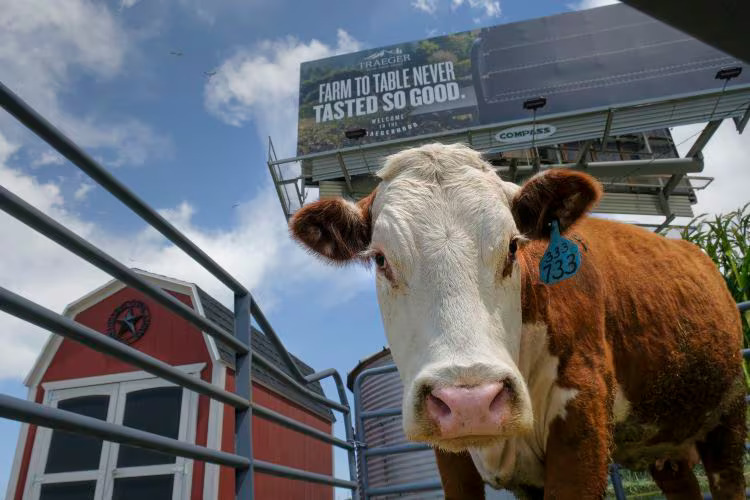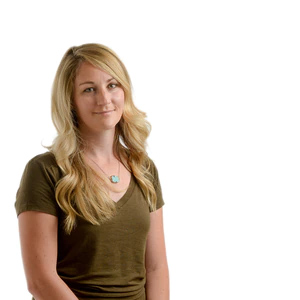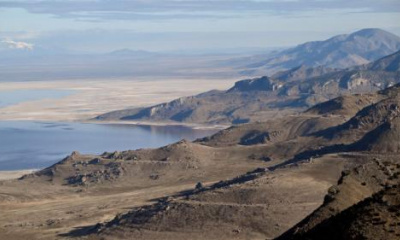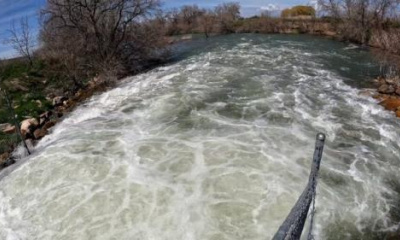Researcher behind a viral graphic on Colorado River water use explains how changing the demand for different crops can create a more water-resilient West.
You may have seen The New York Times graphic that shows where all the Colorado River’s water goes (spoiler: it’s mostly used to grow food for cows).
The researcher behind it, Brian Richter, has spent decades raising awareness about global water scarcity, formerly for The Nature Conservancy and currently as president of Sustainable Waters. Late last year, he also published a study with scientists from Virginia Tech and the University of Delaware that explores how shifting the crops farmers grow can help alleviate water shortages, including in the Great Salt Lake Basin. The findings, published in the journal Nature Water, were revised this month.
Some farmers in watersheds across the West — including the Snake River, Lower Colorado River, Platte River and Rio Grande — have reduced the amount of water they use to grow crops since the start of the “megadrought” two decades ago. Agricultural water consumption dropped in those areas between 18% and 45% over that period. Patterns shifted because irrigators cut the amount of acreage they watered and reduced the amount of water-intensive crops they planted, like corn and wheat, the study found.
But the amount of revenues those farmers reaped substantially increased, by as much as 55%.
That’s not the case for the Great Salt Lake Basin. Here, while revenue also increased, the amount of water consumed by agriculture has gone up by 4% since 2000. That’s even after the amount of irrigated cropland in our region went down by 15%. The study attributes the trend to more thirsty crops grown to raise livestock, particularly alfalfa.
Agriculture is not the only sector consuming water that would otherwise flow to the shrinking Great Salt Lake and Lake Powell reservoir, of course. But in 2022, Richter published another study showing many cities that rely on water from the Colorado River have managed to reduce their water demands even while supporting a population surge. Salt Lake City excelled in this area, cutting its water deliveries by 18% since 2000, even while its population grew by 17%. St. George, meanwhile, more than doubled its size but only increased water deliveries by 15%.
Richter spoke with The Salt Lake Tribune last month about his research and how Utahns can adapt to climate change, growth and dwindling water supplies in both the Great Salt Lake and Colorado River watersheds.
The conversation has been edited for length and clarity.
Tribune: One surprising finding from your research looking at crops grown in various Western watersheds over the last two decades was that while the amount of irrigated acreage in the Great Salt Lake Basin went down, the amount of water agriculture consumed went up. What’s going on there?
Richter: I was surprised too. It was because of the shift in crops being produced over that time period. Alfalfa went up by 11%; other grass hays went up by 5%. Most of that was replacing barley. It’s because of the water intensity of alfalfa. Even grass hay is more intensive than barley.
That same study found that more farmers are growing alfalfa in the Lower Colorado River Basin, too, correct? Why are so many producers turning to alfalfa?
You’re right. One of the things we’re seeing in the Colorado River Basin and Great Salt Lake Basin is this increase in alfalfa production. It’s because of dairy. Dairy is the primary thing driving it. Dairies are expanding. People are always saying ‘Why are farmers growing so much alfalfa, or so many almonds in California?’ It’s not that hard to figure out. If there’s a lot of demand, and the price is right, that’s what farmers grow.
I thought consumer demand for dairy milk was declining over time as the popularity of nut and soy milks is expanding. Are we just eating more cheese than before?
You hit the nail on the head. It seems cheese is increasing in demand. Americans are apparently eating more cheese now. The other thing about the nut milks is, yes, they’re starting to eat into market share, but they’re still a pretty small amount of the overall market share.
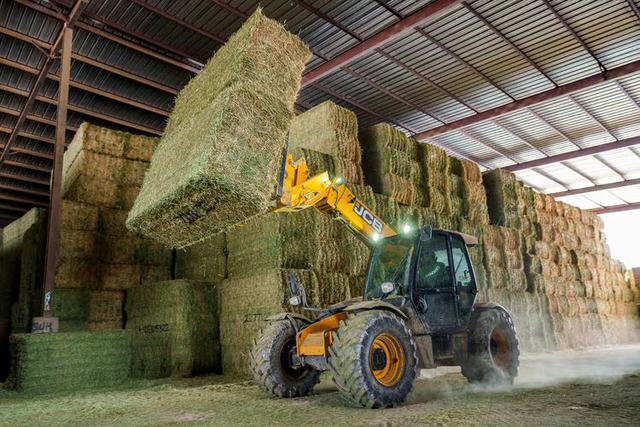
(Trent Nelson | The Salt Lake Tribune) Baled alfalfa at Bailey Farms in Ephraim on Thursday, March 2, 2023.
Your 2020 study that led to a pretty compelling graphic in The New York Times, however, shows most of the Colorado River’s water is used to grow feed for beef cattle, not dairy cows.
In that work, we estimated two-thirds of the hay and cattle feed grown with Colorado River water has gone to beef, and the other third has gone to dairy. But it’s the dairy part that’s growing. I don’t think it’s growing so fast it’s going to be 50-50, but dairy is the part that’s increasing. That’s why alfalfa production is going up.
While revenues in agriculture seem to have gone up across the board in the watersheds you studied, every farmer I’ve spoken to is getting by on slim margins. So how do we address our water shortages while supporting rural, ag-based economies?
In our newest paper that’s focused on crop shifting, if you look at the section of conclusions, we talk about the fact that helping farmers make a transition to different crops or asking farmers to perhaps take some portion of lands out of production, whether temporary or permanent, is going to require some financial subsidization or incentives to do it. One of the places we looked at was the Federal Crop Insurance Program. The payouts on crop insurance have been going up. Climate change is definitely having an influence on that.
Your study notes the insurance program creates a disincentive for farmers to switch to more drought-resilient plants. Is that the case for alfalfa? Is the fact that our water has historically been so cheap considered a form of subsidy for water-intensive crops as well?
Most of the crop subsidies go to the big crops in the U.S., like corn and soybeans, that sort of thing. I don’t know how much subsidies alfalfa farmers are getting. But it’s long been understood that the price farmers pay for water is very minimal or zero. The fact that a lot of that water is being provided through federal and state water projects, people have argued that’s a form of subsidy paid for by the American taxpayer. This is true for cities, too, by the way. We don’t pay a whole lot for water.
Our lawmakers are looking to invest big on securing new water sources from other states, whether that’s through building pipelines or paying California to build desalination plants so we can keep more Colorado River water in Utah. Do you see that as a viable solution?
I’m always quick to say that conservation is the cheapest way out of water shortages and water scarcity. The cost of conservation is far less than the cost of any new water supply.
When I look at a city or state or farming district and they’re talking about trying to bring in new water in some way, I think they need to look at the economics and the cost differences between the different solutions. There are very few places that are maxed out on water conservation.
But I’m not going to say that there aren’t places in the West where moving around water or desalinating water isn’t the next best strategy. Las Vegas has become a star in water conservation. The things they’re doing to pay people to rip out lawns and such are really impressive. But they’re not importing water yet and they’re not desalinating water yet. There are other cities like San Diego that pretty much get an A on their water conservation, but in the last couple of decades, they’ve started to invest in desalination. They also worked out this deal with farmers in the Imperial Irrigation District where they pay for every acre-foot they can conserve, and it’s transported over through the Colorado River Aqueduct. That’s a form of importing water.
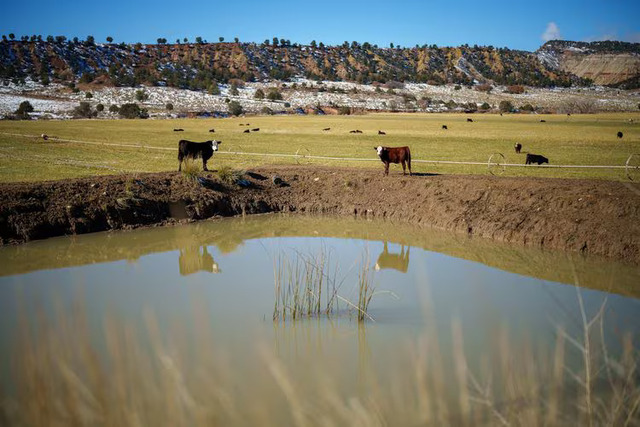
(Trent Nelson | The Salt Lake Tribune) Cattle on alfalfa fields in Mt. Carmel on Thursday, Nov. 10, 2022.
In our conversations about rescuing the Great Salt Lake and preserving the Colorado River system, the divide between rural and urban communities seems to be widening, with each blaming the other for our water scarcity problems. How do we bridge that gap?
I drill this into my university students’ heads. You have to look at the whole water budget. You can come to some misleading conclusions if you just look at urban water use, or just irrigation use, or just industrial use. We have to look holistically.
We need to ask cities to do as much as they can, and a lot of them are doing a good job at water conservation. But the real gains are going to be in farming, there’s no two ways around that. Figuring out how we can incentivize the farmers to use less water is what this story is all about.
We have to scrutinize whether some portion of the irrigated farmland might need to come out of production. For farmers, that sets off alarm bells and I understand that. But if you do it carefully and do it smartly ... the impacts on food production aren’t all that consequential.
One pervasive bit of misinformation we’ve tried to dispel at The Tribune is this belief that the majority of Utah’s alfalfa gets exported to other countries. Our reporting found it’s only around 8%. Is that something you’ve investigated as well?
One of the things our Colorado River study looked at was exports of cattle feed out of the country. It was only 10% to 15%. And interestingly, that’s how much we import as well, so it’s kind of a balance. Almost 50% of cattle feed gets consumed in the county it’s grown in.
You mentioned farmers are just producing the crops that consumers demand. So how much could our water problems in the West be solved if we simply stopped eating so much beef?
Well, there you go, right? Our original title for the 2020 study was ‘Is my burger killing the river?’ I’ve personally stopped eating beef because of my research. A lot of my friends have as well. Beef prices in this country are really, really low. The fact you can buy a burger at Arby’s or McDonald’s for 89 cents is shocking. It’s not capturing the full cost of what beef entails, including water consumption, greenhouse gas emissions and the land use required.

